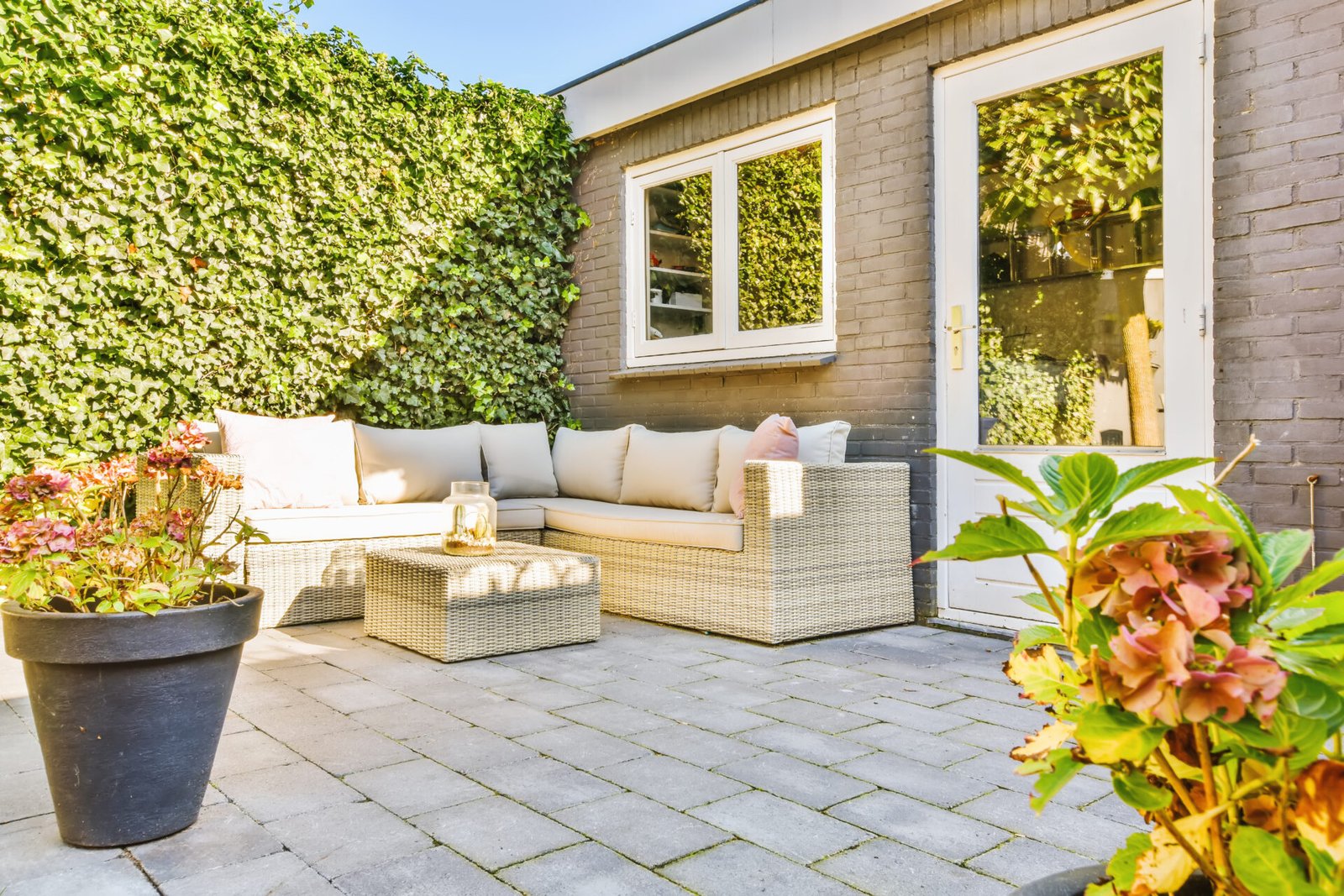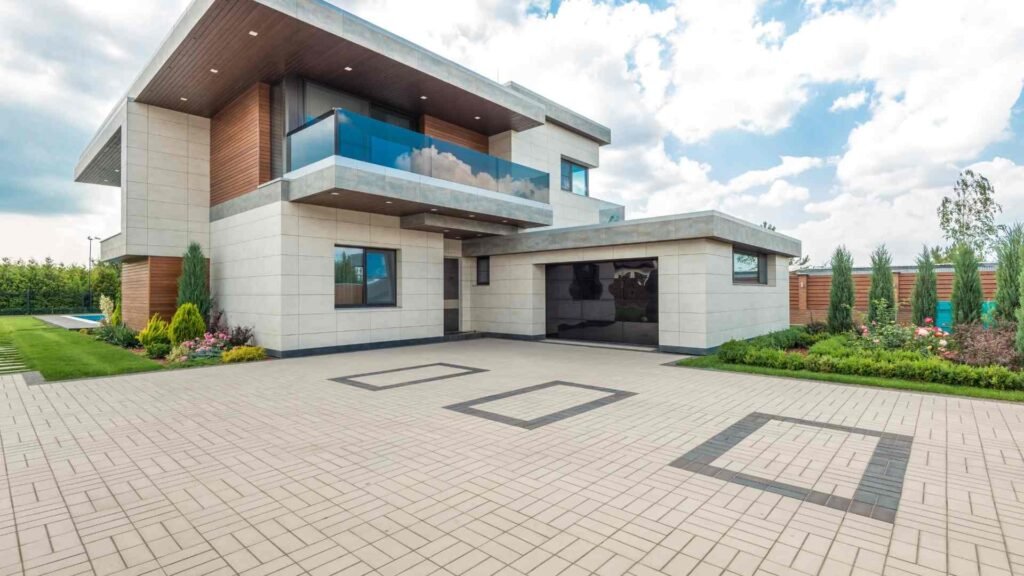When planning to upgrade your outdoor space, a concrete patio often comes to mind as an appealing and practical solution. While price is an important factor, there are several other aspects to consider before making your decision. This article will explore whether a concrete patio is the budget-friendly option you’re searching for, by weighing the costs, maintenance, and long-term value.
The Advantages of Choosing a Concrete Patio
Concrete patios have become a popular option among homeowners who want a durable, versatile, and customizable outdoor space. Here’s why concrete often comes out on top:
- Longevity: Concrete is incredibly durable and can last for several decades with minimal upkeep.
- Customizable Design: Concrete offers a wide range of textures, colours, and patterns, allowing you to tailor the design to your preferences. Stamped or stained concrete can mimic more expensive materials like stone, adding to its versatility.
- Easy Maintenance: Unlike wood, which requires regular sealing and staining, concrete needs minimal maintenance over the years.
- Adaptable: Whether your outdoor space is modern or traditional, concrete can fit a wide range of design aesthetics. Concrete patios can seamlessly complement other features in your yard, such as driveways or steps, providing a cohesive look throughout your property.
Despite these advantages, the key question remains: does concrete provide the best balance between initial investment and overall value? Let’s take a closer look at the costs involved.

Cost Factors in Concrete Patios
When evaluating whether a concrete patio is the most affordable choice, it’s essential to break down both the upfront and long-term expenses. Here’s a look at the main cost drivers:
1. Material Costs
Concrete is generally considered cost-effective. Basic poured concrete typically costs $3 to $6 per square foot, while more decorative options like stamped or coloured concrete can range from $8 to $15 per square foot. These prices can vary depending on your region, but concrete is often cheaper than alternatives like natural stone or high-end pavers.
For homeowners looking to expand their concrete surfaces beyond patios, incorporating can provide additional value, creating a unified look across your outdoor spaces while keeping costs manageable.
2. Labour Costs
Labour expenses are another significant part of the total cost. A basic concrete patio installation usually costs between $4 to $10 per square foot, depending on the complexity of the job. More intricate designs or larger spaces might push this cost higher, but concrete’s longevity ensures that these expenses are well worth it.
If you’re also considering a new driveway or concrete steps installation, coordinating these projects together can save on overall labour costs, as contractors can complete all the concrete work at once.
3. Maintenance Costs
Concrete patios are known for being low-maintenance. They need occasional sealing every few years to prevent cracks and stains, which is relatively inexpensive compared to the upkeep of materials like wood, which may need annual staining, sealing, or even board replacements. In contrast, concrete patio requires less effort, saving you time and money over the years.
For larger outdoor spaces, the minimal maintenance of concrete can further reduce long-term costs, making it a budget-friendly material choice across multiple outdoor applications.
4. Repair Costs
Over time, concrete can develop cracks due to weather shifts or wear and tear. Small cracks are often easy to repair and won’t break the bank. Major damage, however, may require resurfacing or, in severe cases, a full replacement. Compared to wood, which is prone to rot and warping, concrete tends to have fewer repair issues and is more cost-effective in the long run.
The durability of concrete makes it a great choice for heavily-used areas like where long-lasting, low-maintenance materials are crucial.
5. Lifespan and Value
Concrete patios are built to last—often for 30 years or more—with minimal repair needs. While a wooden deck may need replacing after 10 to 15 years, concrete provides long-term value. Its longevity, combined with low maintenance, makes it a cost-effective choice over time.
If you plan to enhance your outdoor space with features , investing in concrete can significantly extend the lifespan of these installations, ensuring you get the best value for your investment.

Comparing Concrete with Other Patio Materials
To determine if a concrete patio is the most affordable option, let’s compare it to other popular outdoor materials:
1. Wood Decks
- Upfront Cost: Wood decks typically cost $15 to $35 per square foot, depending on the type of wood.
- Maintenance: Wood requires regular sealing, staining, and sometimes replacement of boards, adding to long-term expenses.
- Lifespan: Wood decks usually last 10 to 15 years, and maintenance can become costly over time.
2. Natural Stone
- Upfront Cost: Stone patios, such as flagstone or slate, can cost anywhere from $15 to $50 per square foot based on the stone type and the difficulty of installation.
- Maintenance: Stone is highly durable but may require resealing and occasional repairs in climates with extreme temperatures.
- Lifespan: Stone patios can last for many decades, even a lifetime, but the initial investment is much higher than concrete.
3. Paver Patios
- Upfront Cost: Paver patios generally range from $10 to $20 per square foot, depending on the material and design.
- Maintenance: Pavers can be replaced individually if they crack, but the space between them may require weed control and occasional resetting.
- Lifespan: Paver patios have a lifespan of about 25-30 years, offering durability similar to concrete but often at a slightly higher upfront cost.
Unexpected Costs to Watch For
Although concrete is usually a budget-friendly choice, there are a few additional costs that could arise:
- Site Preparation: If your yard needs to be leveled or graded, expect additional labour costs. This is particularly important for larger projects like steps where even grading is necessary for proper drainage and stability.
- Drainage: Concrete is non-permeable, so proper drainage systems may need to be installed to avoid water pooling, especially for larger patios.
- Permitting: Some locations require permits for patio installations, which can add to the overall cost of the project.
Should You Go DIY or Hire a Pro?
You might consider saving money by installing a concrete patio yourself. While doing it on your own can cut down on labour costs, keep in mind that concrete work requires significant expertise. Poorly mixed or unevenly poured concrete can lead to long-term problems such as cracking and drainage issues. For most homeowners, hiring a professional ensures the job is done right and prevents costly repairs in the future.
If you’re considering a larger concrete project, like installing driveway or a driveway, working with a professional contractor ensures that all elements are properly aligned and built to last.
Is a Concrete Patio the Best Affordable Option?
Although concrete patios may not always have the lowest upfront cost, they offer excellent long-term value when considering durability, low maintenance, and lifespan. While other materials like wood or stone can be more expensive and require more upkeep, concrete often provides the best return on investment over time.
